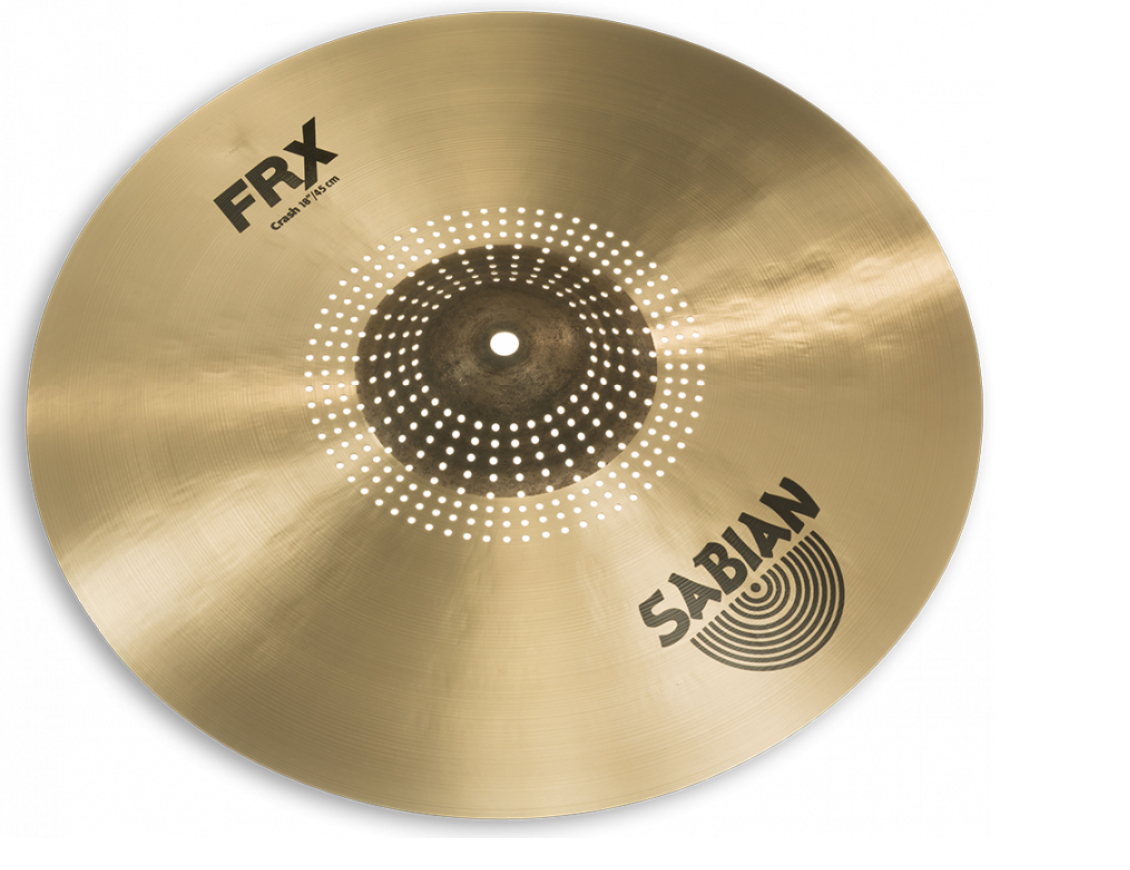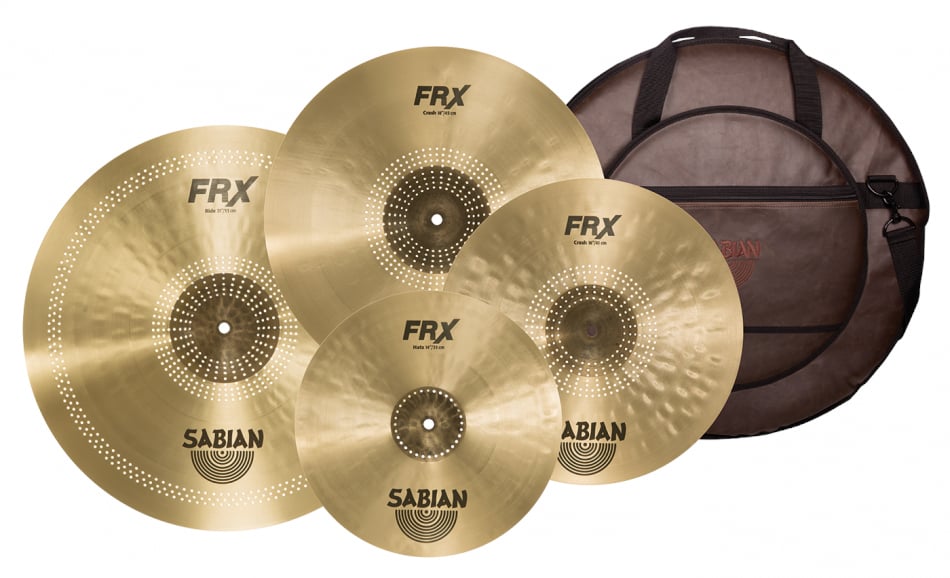You know the story: the pastor, clubowner, or neighbor heads over to the guitarist and says “turn that darn thing down!” Grudgingly, the amp Definition:
Definition:
Abbreviation for either Ampere or Amplifier. gets turned down a notch. Then it’s the drummer’s turn: “And turn those cymbals down, too!”
Ooops. No can do.
Of course, you could use electronic drums, but those have their own issues—like carting amps around, and dealing with a different feel. Or you can just concentrate on not hitting the cymbals as hard and babying your playing, but that’s no fun.
Which brings us to Sabian’s FRX (Frequency Definition:
Definition:
A value, expressed in Hertz, that indicates how many cycles of a periodic signal occur in one second. Reduced Cymbals). Although there have been “low-volume” cymbals before, these take a different approach: they cut specific frequencies, basically acting like mechanical notch filters, to give the perception of low volume while still delivering a satisfying cymbal sound. But they also have uses other than playing Houses of Worship or downsized venues. In the studio, these cymbals create more space for other instruments.
So How Does It Work?
The FRX is a family of cymbals, including 14” FRX hats, 16”, 17”, and 18” FRX crash cymbals, and both 20” and 21” ride cymbals. The manufacturing process removes mass in the cymbal, which attenuates specific frequencies in the midrange and highs. They’re essentially equalized to fit better with other instruments, which is also what gives the perception of lower volume.
This isn’t to say they don’t reduce the volume; they do, by about 4 dB Definition:
Definition:
1. A deciBel is a logarithmic ratio between two quantities, and is a nonlinear measurement that mimics human perception. 2. A unit expressing sound levels relative to a nominal level just audible by the average human ear, and equal to 1/10th of a Bel.. However, they take advantage of the fact that the human ear’s response peaks around 3 to 4 kHz Definition:
Definition:
kHz (Kilohertz): 1,000 Hertz, or one thousand cycles per second.. By reducing frequencies in that range (as well as higher frequencies), the ear perceives the volume as being considerably lower. As a side benefit, this also helps reduce the risk of hearing damage.
Also note they don’t have a freakish appearance—they look just like normal cymbals, save for a series of small holes drilled in an unobtrusive circular pattern radiating outward from the bell for the crash cymbals and hi-hats (Fig. 1).

The ride cymbals have additional holes drilled discreetly around the cymbals’ outer diameter (Fig. 2).

What It Means to Drummers
Because the drums seem softer, drummers get to hear the kit with more clarity. But perhaps a bigger advantage is that you don’t need to hold back. You can play the cymbals just as hard as you would normally, and concentrate on the groove and “feel” instead of second-guessing your touch. One of the main goals of FRX was to allow drummers to feel free to play the way they normally play, but without drowning out the rest of the band. You can also play more aggressively in smaller venues, without causing volume problems.
Another huge advantage is being able to remove the drum shield Definition:
Definition:
1. The outer conductive wrapping on a cable. 2. A metal plate or enclosure around a device to keep out radio frequency and magnetic interference. you normally need to use. It puts too much of a barrier between you and your congregation or audience, which reduces engagement. With the drum shield out of the way, drummers are part of the band and part of the service or concert, not isolated off in a corner.
What It Means to Everyone Else
Interestingly, there’s a lot less potential for bleed into other microphones, which makes life much easier for the live sound engineer. In a way, it’s almost like the sound engineer has already EQed the cymbal to fit best into a mix. But of course, the main beneficiary is the audience—whether it’s a house of worship congregation, or an audience in an intimate club. They can enjoy the impact and sound of the drums, without the side effect of excess volume. What’s more, band members can hear each other better, which means better interaction, a more spontaneous performance, and overall, a better experience.
Sure, drums have been around forever, and so have cymbals. But that doesn’t mean they can’t be improved, and the FRX cymbals use technology in a simple, satisfying, innovative way. Who says there’s nothing new under the sun?
Don’t hold back! Check out the video below to learn more and visit fullcompass.com to get your Sabian FXR cymbals today!
[wpvideo 58VFDKnD]



